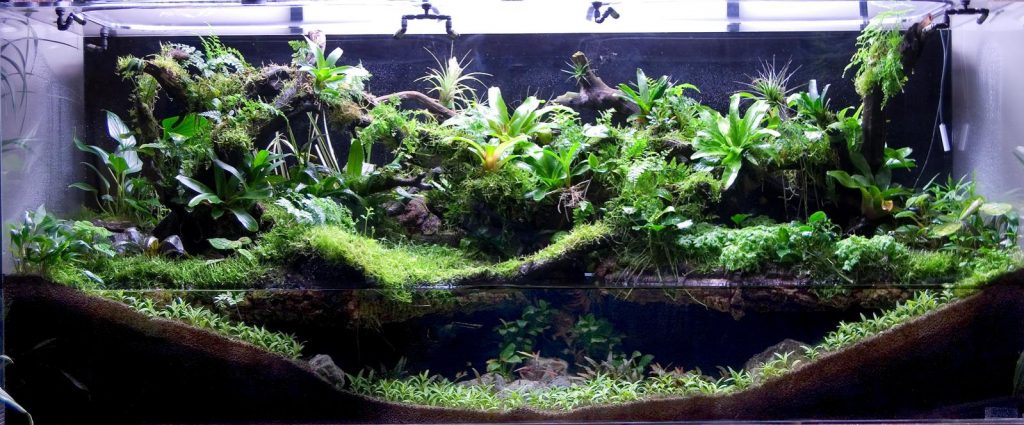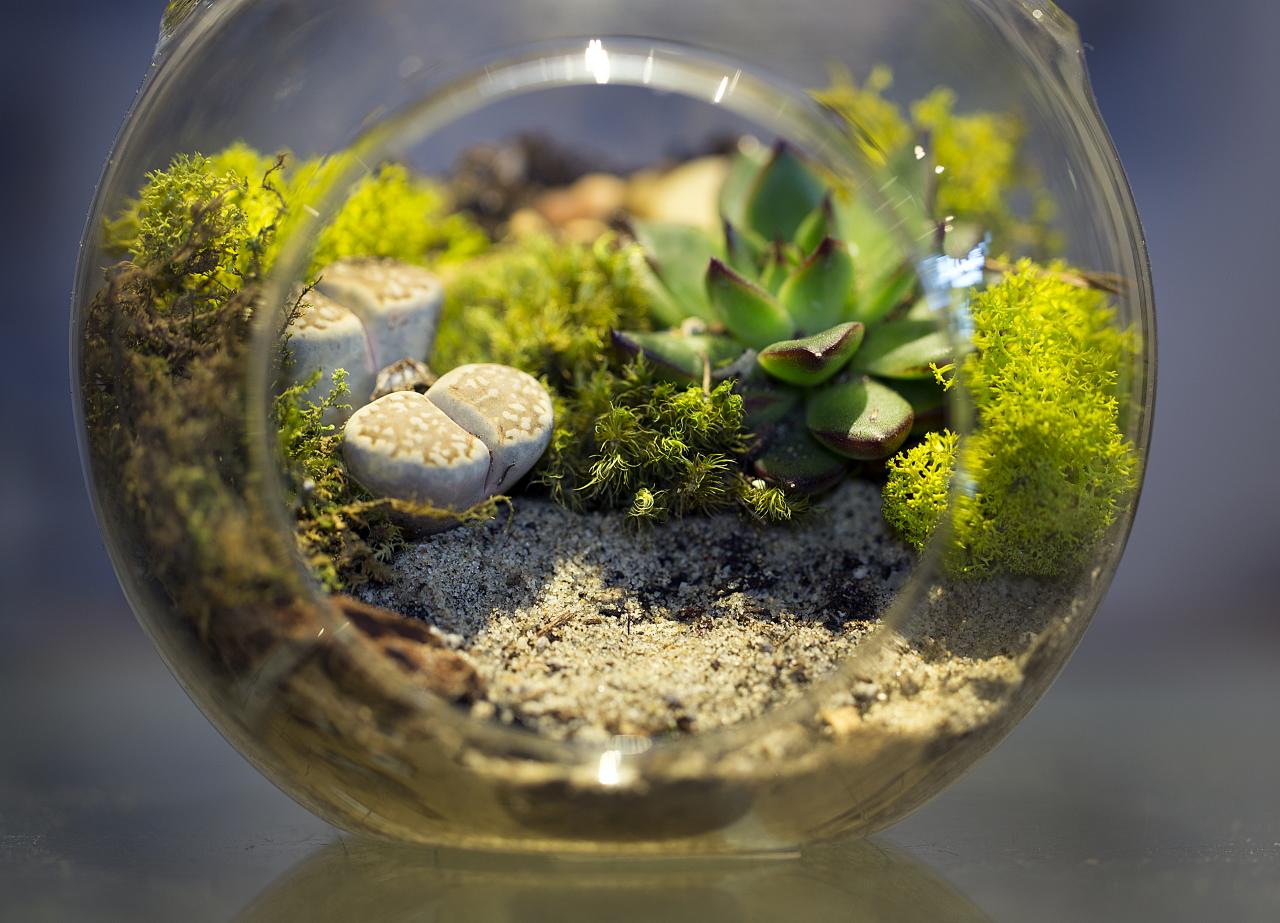
Home Terrariums: Creating Miniature Forests, Deserts and Swamps (Part 3)
Wouldn’t it be great and relaxing to bring the inspirational marvels of nature into your house by erecting a stretch of desert, swamp, or woodland, complete with suitable animal life?
So, how about making your own swamp in your den?
The “How-To”

The first step to making a desert terrarium consists of choosing the right container for your miniature desert.
Again, remember this from the first article:
“The best container for any type of terrarium is a glass aquarium. First lay down a foundation about an inch thick, of pebbles, glass marbles or flowerpot fragments on the bottom of the terrarium. This foundation will provide drainage. If you wish to build up a mountain at one end of the terrarium, you should have a somewhat deeper foundation. The foundation of rocks and pebbles not only ensures proper drainage, but it will enable you to see whether you are giving too much or too little water. You will also be able to observe the growth of roots and the inevitable appearance of green algae.”
How to Prepare a Miniature Swamp?

A sunny swamp is a paradise for naturalists. You can make such a swamp in your terrarium or even in a glass tumbler. By judiciously placing stones, pieces of wood or smooth-edged fragments of glass or china, you can have a pool with a bank sloping up to a comparatively dry level. To keep your swamp as moist as possible, it would be well to provide it with a glass lid. In such a terrarium, if there is enough light and if the temperature is not too high, many plants will grow with a beauty and luxuriance they never show in a less humid atmosphere. Groves of translucent green stems, bearing tiny emerald-green leaves, often grow straight up from beds of moss. Coleus will develop large fragile leaves, while white, feathery roots will grow straight out in the moist air all along the stem. Since this plant grows very rapidly, you will have to prune it mercilessly in order to keep it down to a reasonable size.
Orange and grapefruit seedlings will thrive in your swamp. I have seen grapefruit seedlings flourish in a terrarium so damp that their leaves constantly glistened with moisture. Sansevieria and amaryllis will also do very well. On the other hand, many plants will die quickly in such a humid atmosphere. Pine and cedar seedlings and most grasses almost always succumb to the fungus spores that are present.
Frogs, millipedes, pill bugs, springtails and salamanders can endure the humid atmosphere of a closed swamp terrarium. You can collect frog, toad or salamander eggs and if you do not crowd them, watch the young develop. Tadpoles (the larvae of frogs and toads) feed on the green scum (algae) always found in ponds. You can speed up their growth by feeding them hard-boiled egg yolk, supplied in small amounts and occasionally bits of liver. Salamander larvae will prey on each other and on Daphnia Tubifex and white worms – these living foods are usually supplied by aquarium supply stores. Turtles will live in the close terrarium under the proper conditions. You will have to provide them with the right sort of food, that is, live worms and insects whenever possible, fresh, raw, lean meat and fresh, clean lettuce or other raw vegetables for those that will eat them. You must make sure that the turtles can go from the water to a dry place –preferably a place where they can sun themselves. You should keep the terrarium clean by dipping out waste matter.
Certain animals would not be able to survive in your homemade swamp. Lizards and horned toads would require a much drier atmosphere. Many insects such as most grasshoppers would soon be choked by a white cobwebby fungus that grows down into their breathing tubes when the air is too moist and warm.
